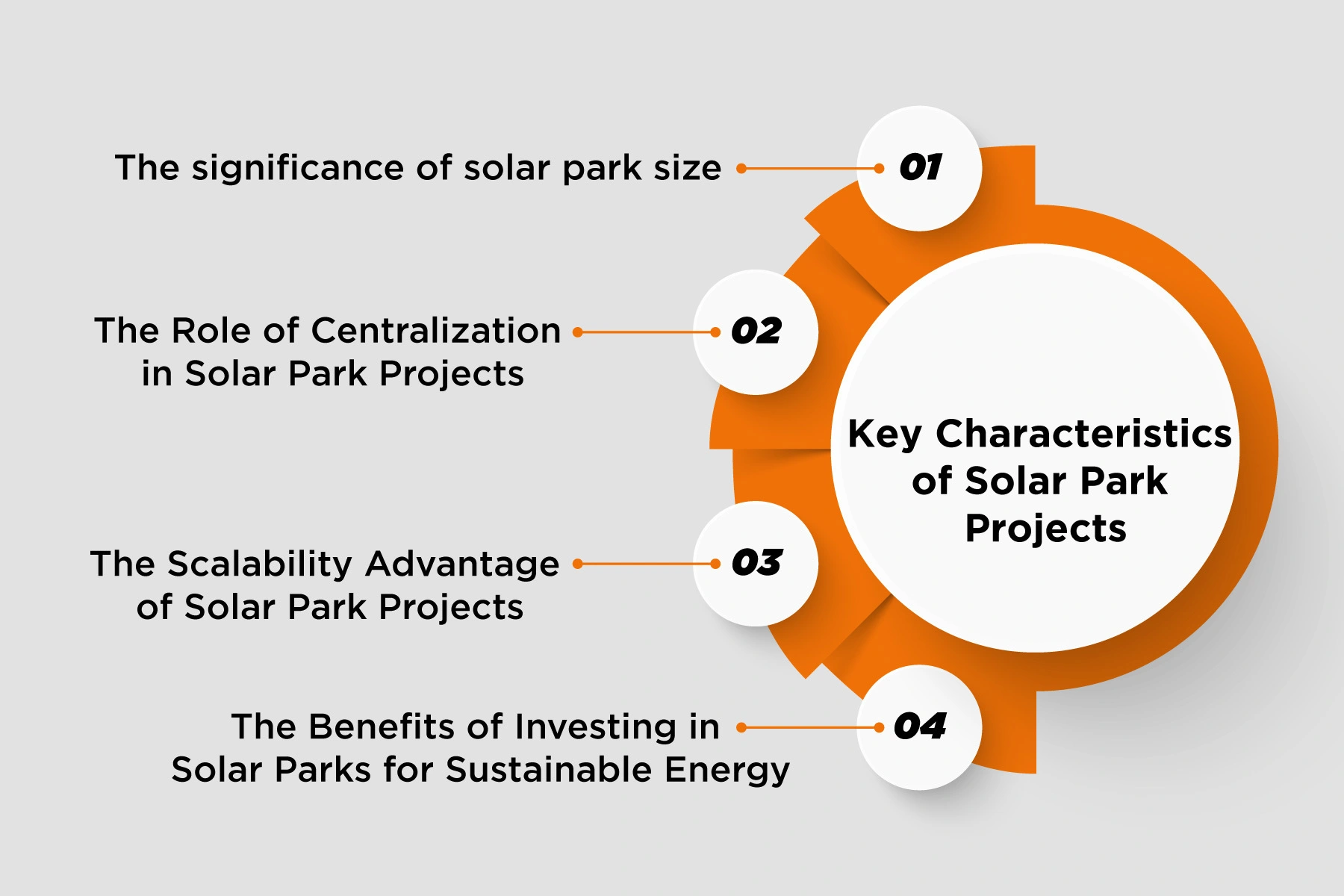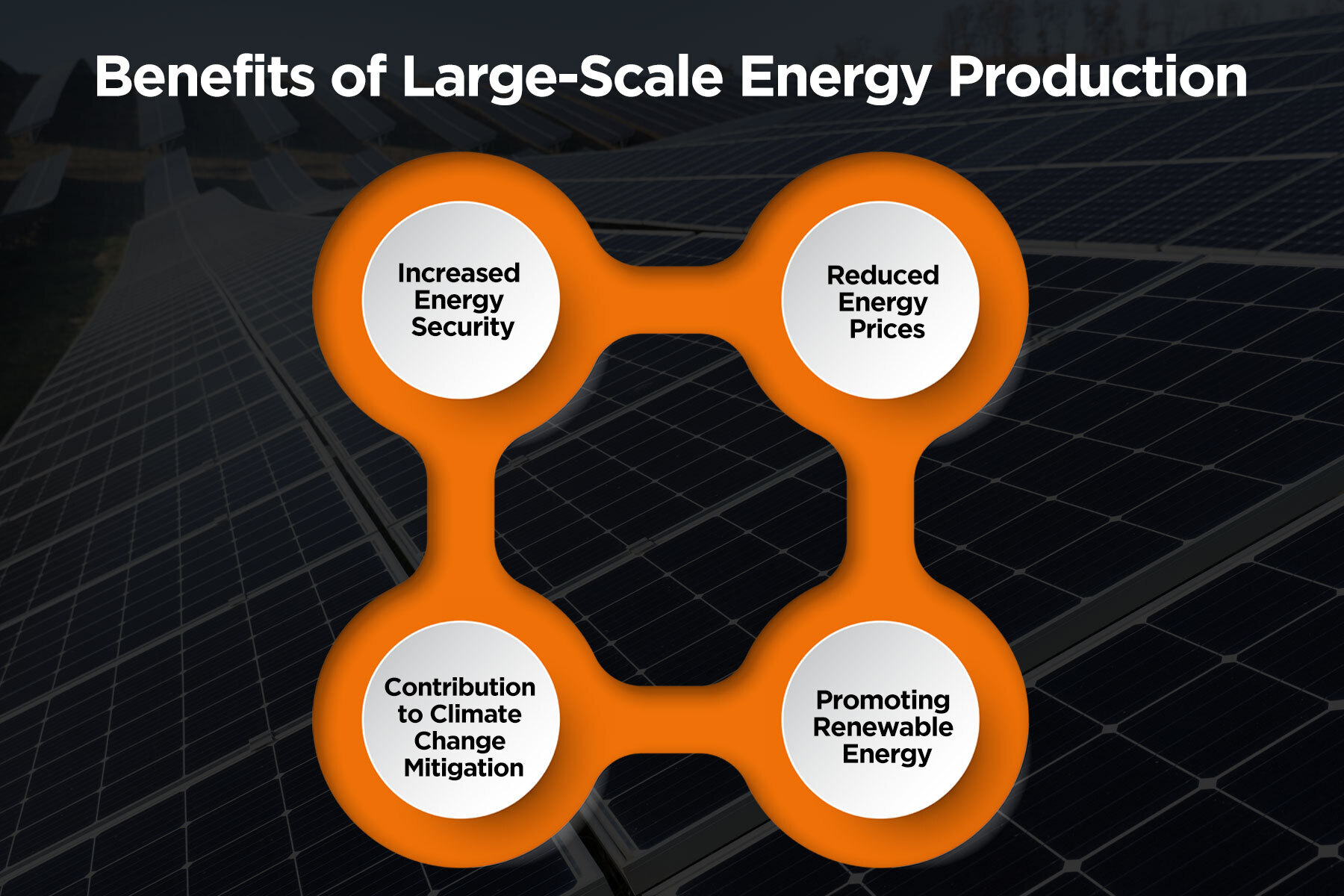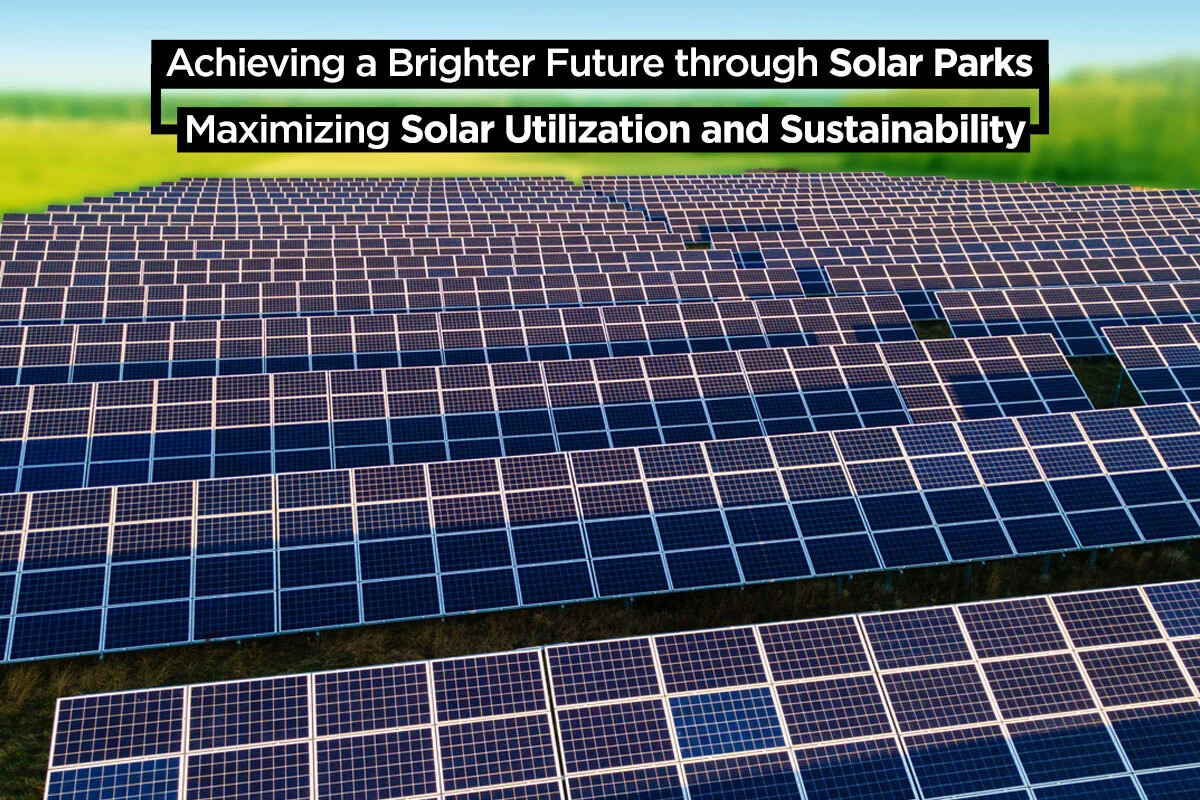BRIGHTER FUTURE THROUGH SOLAR PARKS
ACHIEVING A BRIGHTER FUTURE THROUGH SOLAR PARKS:
MAXIMISING SOLAR UTILIZATION AND SUSTAINABILITY
Solar energy is one of the most renewable and sustainable sources of energy that we have today.It is a great substitute for conventional energy sources like fossil fuels and nuclear power. With the increasing demand and the need for sustainable solutions, solar energy utilisation is gaining more and more popularity. In this context, solar park-based projects have become a vital part of the renewable energy industry.
A solar park is a large-scale solar energy installation that aims to harness the sun’s power to generate electricity. The concept of a solar park is to bring together multiple solar panels, inverters, transformers, and other components to create a centralised source of clean energy. These projects have been implemented all over the world, and they are making a significant impact in reducing carbon footprint and mitigating the effects of climate change.
This article aims to provide a comprehensive overview of solar park-based projects and their significance in achieving maximum solar utilisation. So we will discuss the various components that make up a solar park, the benefits of opting for a solar park-based project, and the future outlook of the renewable energy industry. It will assist you in understanding how to use solar energy, whether you own a business or industry and want to install solar panels on your property, or if you own a business and want to invest in renewable energy.
Understanding Solar Park Based Projects
A Solar Park is a large area of land dedicated solely to the generation of solar energy.
This project typically features many photovoltaic panels and other solar energy-generating equipment. The panels are strategically placed to maximise the amount of sunlight they receive, which maximises the amount of energy that can be generated.
Solar parks are typically located in sunny regions and are designed to take advantage of the abundant solar radiation. They can range from a few hectares to several square kilometres and accommodate hundreds of thousands of solar panels.
The amount of land required for a solar park depends on several factors, including the size of the system, the type of panels used, and the layout of the panels. On average, a solar park requires anywhere from 5 to 50 acres of land per megawatt (MW) installed capacity. For example, a 10 MW solar park typically requires 50-500 acres.
Key Characteristics of Solar Park Projects
 The significance of solar park size
The significance of solar park size
The projects are typically much more extensive than traditional solar projects, with the largest solar parks covering thousands of acres. This allows for a much greater amount of energy to be generated, which is essential for meeting the energy demands of modern society.
The Role of Centralization in Solar Park Projects
Centrally located means that the energy generated by the panels is channelled to a central location, such as a substation, where it is distributed to the grid. This centralization helps to ensure that the energy generated is consistent and reliable, as well as reducing the costs associated with transmission and distribution.
The Scalability Advantage of Solar Park Projects
As the demand for renewable energy continues to grow, the size of these projects can be increased to meet that demand. This makes Solar Parks a highly attractive option for investors and energy companies, as they can provide a steady income stream for many years.
The Benefits of Investing in Solar Parks for Sustainable Energy
As IT companies and big corporations consume a significant amount of energy, and with the increasing focus on sustainability and reducing carbon footprints, investing in solar parks can be a highly beneficial and cost-effective solution. Solar parks can offer substantial cost savings for IT companies and large corporations. By investing in a solar park, companies can reduce their reliance on traditional energy sources, which often have fluctuating prices, and instead access low-cost, renewable energy. This can result in significant long-term savings and a more stable energy supply. Solar parks can enhance a company’s reputation and brand image. Companies that invest in sustainable energy solutions are viewed as environmentally responsible and forward-thinking, which can attract customers and employees who share these values.
Advantages of Opting for a Solar Park-Based Project
The world is moving towards a greener future, and solar energy is one of the key ways to achieve this. Solar parks are an innovative and cost-effective solution that can help increase the utilisation of solar energy and reduce the usage of precious land resources.
Here we will explore the key advantages of opting for a solar park-based project-
Increased Solar Energy Utilisation
One of the main advantages of solar parks is the increased utilisation of solar energy. By centralising the solar panels in one location, the capacity to produce and generate electricity is much greater than individual solar panels. This means that the energy produced from a solar park can power entire communities, making it an excellent solution for meeting the energy demands of large populations.
Reduced Land Usage
The compact design of solar parks makes it possible to locate them in areas close to urban centres, reducing the need for long transmission lines and reducing the project’s overall carbon footprint.
Improved Energy Production Efficiency
Solar parks also offer improved energy production efficiency. By centralising solar panels, it is easier to maintain and repair them, reducing downtime and increasing energy production efficiency. Large solar parks also enable energy storage solutions, which can be used to store energy during peak times and release it during low-demand periods.
Cost-Effective Solutions
Solar parks are cost-effective solutions. Due to their scale, the cost of solar panels and other equipment is significantly reduced, making it more accessible for communities to transition to renewable energy. Solar parks also reduce the cost of energy transmission, as the energy produced can be distributed to multiple locations from a single central location.
Benefits of Large-Scale Energy Production
 Large-scale energy production has been one of the most popular trends in the energy sector. It offers numerous benefits that make it an attractive option for people looking to reduce their energy costs and contribute to environmental sustainability. The increasing demand for large-scale solar PV and solar energy projects has brought several advantages, including increased energy security, reduced energy prices, contribution to climate change mitigation and promotion of renewable energy.
Large-scale energy production has been one of the most popular trends in the energy sector. It offers numerous benefits that make it an attractive option for people looking to reduce their energy costs and contribute to environmental sustainability. The increasing demand for large-scale solar PV and solar energy projects has brought several advantages, including increased energy security, reduced energy prices, contribution to climate change mitigation and promotion of renewable energy.
Here are the benefits of large-scale energy production and how it is transforming the energy industry-
Increased Energy Security
Large-scale energy production, especially solar energy projects, can play a crucial role in increasing energy security. With the growth of the solar energy industry, countries can reduce their dependence on foreign energy sources and become self-sufficient in terms of energy production. This can help to prevent energy shortages and reduce the risk of price spikes. Moreover, large-scale solar PV and solar energy projects can be installed in remote areas, which can help bring power to previously off-grid communities.
Reduced Energy Prices
One of the most significant benefits of large-scale energy production is that it helps to reduce energy prices. By installing large-scale solar PV and solar energy projects, energy providers can reduce their reliance on fossil fuels and increase their use of renewable energy. This can lead to lower energy prices, as the cost of producing energy from renewable sources is much lower than fossil fuels.
Contribution to Climate Change Mitigation
Another significant benefit of large-scale energy production is that it can help to mitigate climate change. Solar energy projects produce clean energy, meaning they do not emit greenhouse gases. This can help to reduce the amount of carbon dioxide in the atmosphere, which is a significant contributor to climate change.
Promoting Renewable Energy
Large-scale energy production can be essential in promoting renewable energy. By increasing the use of renewable energy, large-scale solar PV and solar energy projects can help to reduce the use of fossil fuels. This can promote a transition to a more sustainable energy system, which is essential for the planet’s long-term health.
Parting Thoughts
Solar energy projects and park-based initiatives are of utmost importance in pursuing sustainable energy solutions. With the world’s reliance on non-renewable sources depleting fast, it is crucial that we switch to renewable sources like solar energy.
The future of solar energy utilisation looks promising, with the increasing trend of renewable energy adoption and technological advancements in the field. As we move towards a greener future, projects that use solar parks will become even more important.
We at Novergy encourage more investment in solar energy projects and promote the use of solar energy on a larger scale. Using solar energy is the need of the hour, and the future of energy utilisation looks bright with solar energy at the forefront. We hope this blog has shed some light on the importance of solar park-based projects, and we highly recommend you to take advantage of the benefits solar energy offers.
Apart from full-service solutions for solar parks, Novergy Solar also provides a range of other services that promote renewable energy and sustainable practices. This includes other solutions for rooftop solar systems, solar water pumps, and solar street lighting. Novergy Solar has a team of experienced people who can help with every step of the process, from evaluating the site and doing feasibility studies to installing the system and keeping it running well.


























![[LIVE] Engage2Earn: Save our PBS from Trump](https://cdn.bulbapp.io/frontend/images/c23a1a05-c831-4c66-a1d1-96b700ef0450/1)

![[ℕ𝕖𝕧𝕖𝕣] 𝕊𝕖𝕝𝕝 𝕐𝕠𝕦𝕣 𝔹𝕚𝕥𝕔𝕠𝕚𝕟 - And Now What.... Pray To The God Of Hopium?](https://cdn.bulbapp.io/frontend/images/79e7827b-c644-4853-b048-a9601a8a8da7/1)










